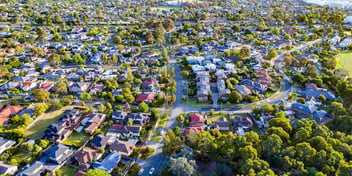How Sydney Water is improving its renewal planning process
Australia’s largest water utility recently improved its asset renewal process for efficient maintenance of its asset portfolio.
In the paper An improved asset renewal planning process, co-authored by Sydney Water Asset and Systems Management Senior Analyst and member of the Australian Water Association’s Asset Management Specialist Network Farhana Rifat, the utility details how and why it embarked on the improvement initiative, along with building a comprehensive case for investment.
“Sydney Water is a state-owned corporation that is financially regulated by the Independent Pricing and Regulator Tribunal (IPART),” the paper states.
"It is imperative that Sydney Water demonstrate to IPART that every dollar invested in renewals is providing the best value for our customers, as IPART determines what Sydney Water can charge to customers.”
Rifat said the process helped the utility, which serves more than five million customers in the Sydney and Illawarra region, find opportunities.
“Sydney Water has been managing these assets for more than 100 years, to serve its customers and to improve the liveability of the city,” Rifat said.
“We are always looking for ways to improve. A recent analysis of our asset renewal processes showed that there was an improvement opportunity to establish a clear line of sight between the asset’s condition and the level of investment.
“Moving towards data-driven decision making was another key driver for this asset renewal planning improvement.”
Improvements to the utility’s asset renewal planning process included introducing a standardised approach to asset planning and risk-based renewal assessment.
"We created a logical, standardised decision-making process that covered major asset classes,” Rifat said.
“It provides more transparency and clarity in the investment decision-making process. Streamlining our process, via one platform – our Business Process Management System – allows for better workflow management and funding allocation.”
Risk-based renewal planning
Focusing on risk-based renewal planning has also bolstered proactive decision making in investment and maintenance, Rifat said.
“The risk-based renewal planning is a decision-making approach based on asset risk profiles,” she said.
“The risk is the function of consequence and likelihood. What we are doing is attributing assets with a consequence of failure score on various impact categories. And the likelihood factor comes from the asset condition.
“These two things together allow us to create a risk-based planning index, which helps us to identify the assets that require renewal. This is very informative. It’s an active indicator, which allows us to be proactive, rather than reactive. This helps us to prioritise our investment.”
Rifat said the benefits of using a standard and quantitative risk assessment approach to renewal planning include providing a uniform risk profile across all asset classes, which allows assets to receive maintenance actions on time, saving money and avoiding negative impacts to the community.
“The benefits include a reduction in the number of emergency renewals we need to undertake,” she said.
“This means that our planners and delivery partners are given more time to implement renewals more efficiently and cost-effectively. Importantly, it is also reducing the impact on our customers.”
Challenges of change
While the indication of these benefits was clearly reflected in IPART’s support for Sydney Water’s 2021–2024 renewals program, valued at more than $2 billion, Rifat said the process was not without its challenges.
“Sustaining any improvement initiative requires sound change management,” she said.
“This is a key challenge for any improvement where you are trying to change planning practice, as well as moving to a digital platform.
“To handle this challenge, we took a holistic approach to enhance peoples’ interaction and buy-in from the very beginning of the process. The process was co-created by different users from various groups. We included everyone, from the front-line officers right through to the delivery management teams.
“Another enabling factor was having continuous leadership support.”
Rifat said that by standardising the asset renewal planning process, Sydney Water is now better placed to make the most of data, both now and into the future.
“We are moving towards a more data-intense future and we are looking forward to leveraging data more effectively across our platform functions,” she said.
To learn more about the Australian Water Association's Asset Management Specialist Network, click here.

